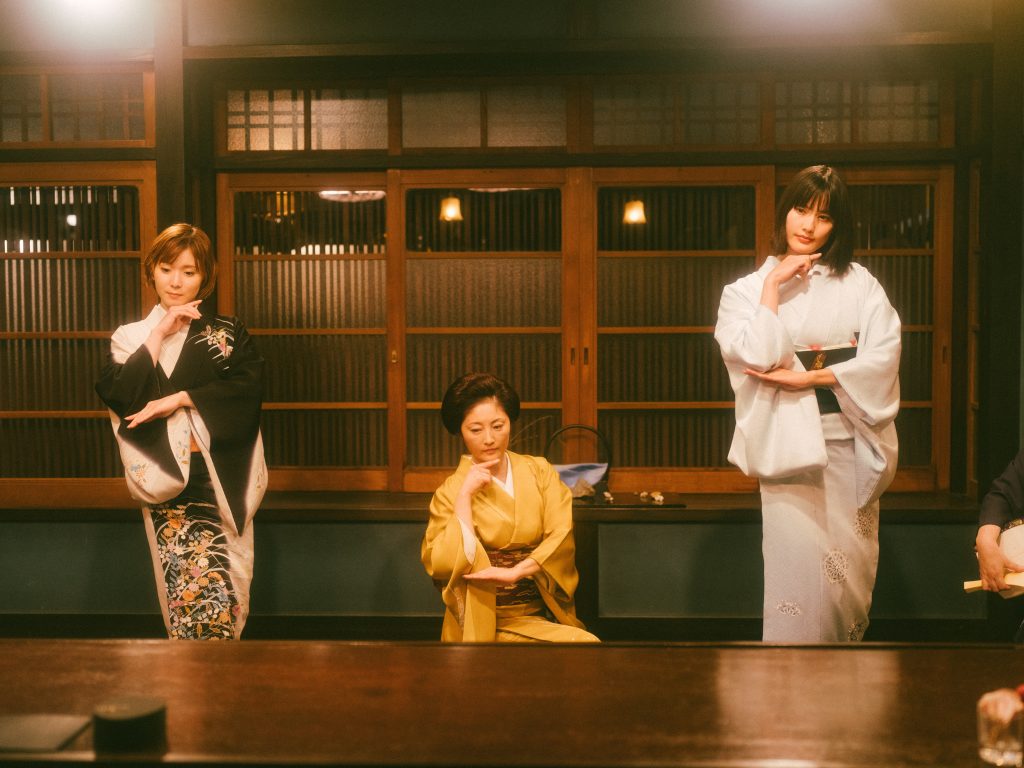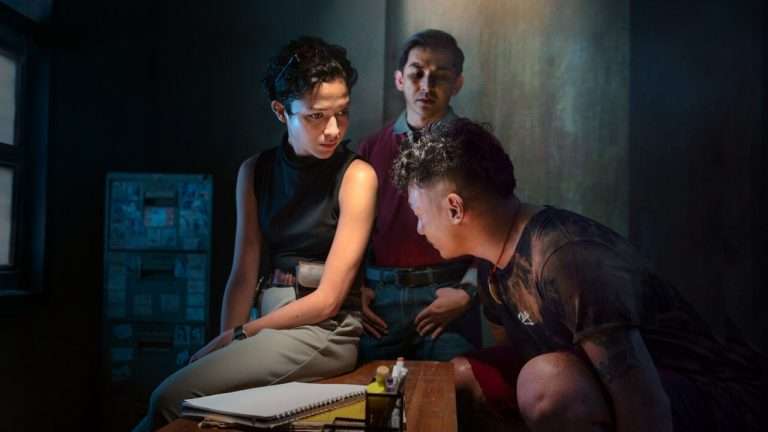The Makanai: Cooking For The Maiko House (Season 1) Review: Hirokazu Kore-eda, arguably the most esteemed Japanese auteur of contemporary times, also renowned for being the modern successor to Yasujiro Ozu, created a rich oeuvre of deeply human stories grounded in precious moments of everyday life. Defined by a naturalistic and unembellished representation of the simple pleasures of daily life, his cinematic sensibilities will leave you happier, richer, and all the more wiser.
It is unsurprising that we often succumb to his artistic talents as his masterful and immersive films such as Shoplifters (2018), Our Little Sister (2015), Like Father, Like Son (2013), Still Walking (2008) sing a sweet melody of tranquillity with a tantalizingly Chekhov-like sensibility that scrupulously resists excesses of melodrama and overwhelming dramatic conflicts. His eternal fascination and preoccupation with the unconventional familial units and relationships that transcend blood ties are so profound and groundbreakingly humanistic that it offers us a slice of ordinary happiness.
In The Makanai: Cooking For The Maiko House, Kore-eda’s first series for Netflix, the Palme d’Or-winning director once again envelops you in a warm hug by portraying a simple story in a genuinely gripping way. Moreover, three up-and-coming filmmakers Megumi Tsuno, Hiroshi Okuyama and Takuma Sato has written and directed episodes alongside Kore-eda. Kore-eda steadily follows his signature style of assessing intimate and emotionally captivating human relationships that emits the warmth of love and kinship beyond domestic blood bonds.
Based on the bestselling manga series Maiko-San Chi No Makanai-San by Aiko Koyama and its anime adaptation Kiyo In Kyoto: From The Maiko House, the live-action nine-episode series spearheaded by Kore-eda follows the exploits of two 16-year-old bosom friends and close companions, Kiyo (Mori Nana) and Sumire (Natsuki Deguchi). They move to Kyoto from rural Aomori, intending to train as apprentice maiko (apprentice geiko, or geisha) entertainers with the dream of becoming a geisha in the future.
Set in the traditional Geiko district of Kyoto, the duo reach the Maiko house, gets acquainted with the mistresses/guardians of the household, Mother Chiyo (Keiko Matsuzaka) and Mother Azusa (Takako Tokiwa), and starts their training to be a maiko. While Sumire, graceful and prudent in temperament, excels as maiko in the traditional art with her natural inclination towards Mai dancing, music, and singing, impressing her teachers, Kiyo, a happy-go-lucky bright-eyed teen with a sunny disposition, proves to be an awkward fit and finds herself on the verge of being expelled for her clumsy and uncoordinated moves and for her inability to even say the traditional maiko greeting unerringly.
Kiyo instead finds her true calling as a Makanai, the traditional cook who prepares the meals within the yakata house where all of the maikos in training live together. And thus begins the culinary and introspective journey of Kiyo as the youngest Makani, tasked with feeding half a dozen maiko, while Sumire rises as a famous maiko in the town with cameras flashing around her.
Even though the main narrative revolves around the coming-of-age tale of longtime friends who support each other through thick and thin, discover and succeed in their passionate aspirations and vocations, it is also an exploration of traditional Japanese art as well as the appetizing and comforting food served by Kiyo. Through the life of Sumire, which unfolds over the course of a year leading to her official debut as a full-fledged maiko, we get a close look at the typical geiko life.
Though the maiko is considered bearers of Japanese traditions and leaders of historical performance art, it is an entertainment business that restricts and regiments the existence of the artists. The reference to the outdated rules and principles governing geiko life – artists must remain unmarried as they are only allowed to be married to their art, retire if they get married, keep intricate traditional hairstyles intact, cannot use cell phones in the maiko house – gives attention to the challenges and difficulties faced by the artists.
The Makanai is an unpretentious world of foodie delights, in the spirit of Jun’ichi Mori’s duology Little Forest, that expresses love, affection, and nostalgia through cooking and sharing food. Kiyo cooks from the heart and presents her culinary creations beautifully, thus uniting the inmates of the yakata house as a family. Kiyo prepares each meal with dedication and respect, keeping in mind that she has to satisfy the varied palates of her fellow inmates and the slightly older mothers. She finds pleasure in her perfectly finished and presented food and in servicing others.
Kore-eda skillfully arranges a close-up shot of a mouth-watering dish in each episode which is shown at the end of its opening credits sequences. The cooking scenes are shot in lush detail, with authentic color tones and freshness that makes it feel authentic. The series opens with scrumptious sweet azuki bean soup with rice dumplings, home-cooked with love and prepared by Kiyo’s spirited and supportive grandmother.
When Kiyo becomes the permanent live-in chef of the Saku House, she cooks succulent comfort food that every inmate delights in – her grandma’s tomato curry, Oyakodon (chicken and egg rice bowl), rice cakes filled with salmon, Umeboshi (pickled plum fruits), Amazake (sweet drink made by fermenting rice and koji mold), bread pudding, creamy white stew, fluffy strawberry sandwich, Karrage (fried chicken), Tonjiru (pork and vegetable miso soup), Nasu nibitashi (braised eggplant), bread crust rusks, and egg sandwiches. The meals solely made for Sumire show the cherished closeness between the friends – the dashi soup with udon Kiyo cooks when Sumire falls ill, the feathery and creamy egg sandwiches Kiyo prepares for Sumire before her debut, and the crispy bread crust rusks Kiyo gifts her after her return.
This female-centric series bears a resemblance to Kore-eda’s Our Little Sister (2015), in which the characters share the same tenderness and compassion. Beyond the central story of the enduring friendship between Kiyo and Sumire, there are other sub-stories and conflicts that the episodes focus upon. The most poignant subplot is that of the strained relationship between mother Azusa and her teenage daughter Ryoko (Aju Makita), as well as Ryoko’s longing for her estranged father.
There’s also the forgotten unrequited love between mother Chiyo and a kabuki actor, a top-ranked geisha and Sumire’s mentor Momoko (Ai Hashimoto), torn between her lover and her art, wanting to change the rule of married women not being allowed to perform; the courtship of Mr. Tanabe (Arata Iura) and Mother Azusa who don’t have much romantic development; a fawning former geisha Yoshino (Mayu Matsuoka) hoping to re-enter the trade; and a maiko Tsurukoma (Momoko Fukuchi) wants to go back home losing her interest in the art. Despite these slight trials and tribulations, there is immense coziness and tenderness in this exquisite tale of goodness.
Kore-eda imparts his signature trademark style by indulging in familiar rhythms of everyday life, showcasing the mundane details – the chatter of the maiko at breakfast, the way food sizzles in hot oil, the haste preparations before a performance, the maiko singing while crossing the river on their day out, and shoveling snow during winter. It easily turns out to be a lighthearted slice-of-life of the daily rituals and organized culture of the aspiring maiko specifically, and a symbol of modern Japanese society in general. The filmmaker shows his rare ingenuity in spotlighting a dying art and the artists living on the margins of society. But the downside is the lack of scope except for the central characters.
Kiyo’s characterization, combined with Mori’s performance, is the stronghold of this series that is strikingly light on plot. She holds the almost 45-ish or less lengthy nine-episode season together with her nonchalant and carefree personality. Kiyo is a delight to watch when she stomps around the town doing grocery shopping with a rucksack of ingredients she has carefully chosen and when she effortlessly cooks in the kitchen. Her selflessness and generosity have no bounds, and it makes her the most endearing character in the show. She is described as “a mysterious girl who talks to food all day” and as someone who “doesn’t have any interest in reality.” Kiyo’s glass-half-full mentality helps her in leading a fulfilled life, and she derives great delight in being an in-house makanai.
Despite being asked about the burden of being the cook of the burden, Kiyo seems to exist in a calm and composed state without making any fuss about doing the tiring chores. She is happy in her job and enjoys the autonomy it offers, even becoming best pals with the inmates and vendors at the stores. Kiyo and Sumire’s unwavering bond of sisterhood makes it gratifying as we see their relationship grow rather than becoming fraught with jealousy and envy. They giggle over a shared slice of cake and take a trip down memory lane to think over their past events in their hometown. Furthermore, they are so in sync, like a married couple of 30 years, that the other maikos are envious of their strong bond.
Another standout among the characters is Momoko, the star geiko, who has a hardcore passion for zombie horror movies. In one of the episodes, she takes advantage of her fervor to put up an adaptation of George A. Romero’s Night of the Living Dead for the annual maiko house showcase in which she gathers the maikos to give a zombie performance. We also have empathy and compassion for Ryoko, who is always in a wistful or melancholy mood, yearning for love from a disgruntled paternal figure. Other relatively minor characters are also memorable in their roles – the bartender pouring after-work cocktails for the geiko night after night, the lover of Momoko who is apprehensive of the screen zombies, and Sumire’s unapproving father who has a change of heart after seeing his contented daughter.
The Makanai is much similar to Shoplifters in its thematic conception as they both exhibit people living in close quarters as a family unit, even though they are not related by blood. Kore-eda, with his gentle and unassuming humanity, provides close observation of the maiko house, maintaining a calmness that boosts and reinvigorates a somber soul. It is nothing but a happy pill that helps us unwind and urges us to find beauty in a quiet moment.
In one of the early episodes, Mother Chiyo explains to maiko Sumire about the delicate balance required for expressing the story in a traditional mai dance, “You must show what’s unseen, but you cannot show too much either.” The series maintains the same balance in showing a good-natured world of pleasant characters and some infrequent difficulties and small challenges they encounter. All in all, this soothing show, which is deep-rooted in uniquely Japanese culture, art, food, and relationships, sweeps you away for a soulful meditation on life and pure, unadulterated love.







